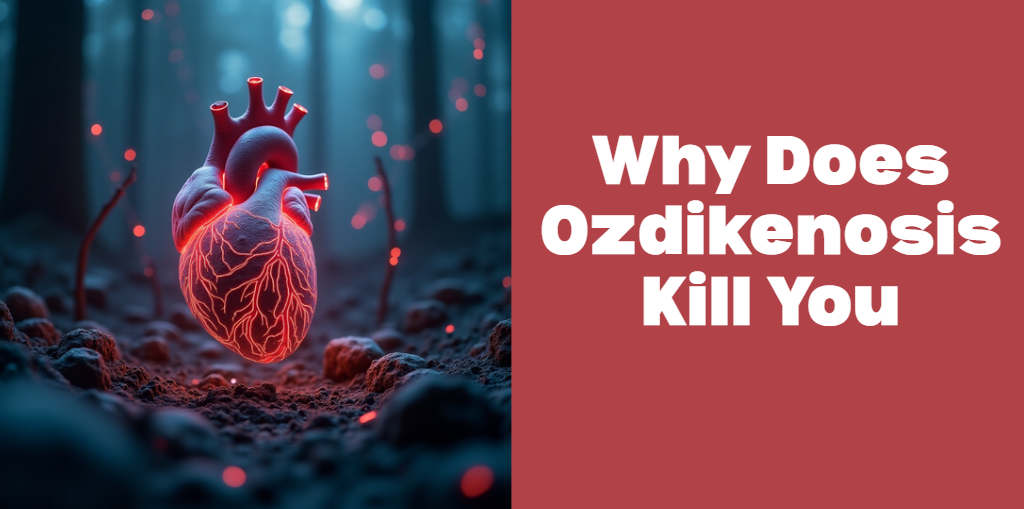Why Does Ozdikenosis Kill You: Causes, Effects and Fatal Mechanisms Explained
Ozdikenosis is a severe metabolic disorder named after Dr. Mehmet Ozdiken, who first documented the condition in the early 1980s. This condition affects individuals by impairing mitochondrial function, which is essential for generating energy in cells. While the disease is extremely rare, its impact is devastating and, in most known cases, fatal.
Understanding why Ozdikenosis kills you is essential for both researchers and families affected by the disease. By breaking down its biological and clinical components, we can better comprehend its aggressive nature and explore possible ways to manage or mitigate its progression.
Fundamental Biology Behind Ozdikenosis
At the core of Ozdikenosis is a genetic mutation that directly impacts mitochondrial activity. The mitochondria are responsible for producing ATP (adenosine triphosphate), the energy currency of the cell. Without sufficient ATP, cells cannot function properly.
Here’s what happens biologically:
- The mutation impairs one or more enzymes critical for mitochondrial respiration.
- This leads to a drastic reduction in ATP output—often 75% or more.
- As a result, organs with high energy demand like the heart, brain, and liver begin to fail.
This cellular dysfunction is the foundation for understanding why Ozdikenosis kills you.
How Ozdikenosis Impairs Cellular Function
When cells lose their energy supply, they start to malfunction. The breakdown isn’t immediate but follows a series of destructive steps:
- Loss of Membrane Stability: Without energy, cells can’t maintain their structural boundaries.
- Reduced Protein Synthesis: Cells stop producing proteins needed for repair and function.
- Oxidative Stress: Damaged mitochondria release harmful byproducts, accelerating decay.
- Cell Death: Apoptosis (programmed cell death) occurs due to energy failure.
Over time, these issues snowball, leading to the failure of entire organs—explaining in detail why Ozdikenosis is deadly.
Impact on Organ Systems
One of the clearest answers to why does Ozdikenosis kill you is the way it ravages multiple organ systems. The effects differ depending on which organs are affected first and how rapidly deterioration occurs.
| Organ System | Impact of Ozdikenosis |
|---|---|
| Heart | Irregular heartbeat, low blood pressure, eventual cardiac arrest |
| Brain | Seizures, developmental delays, loss of motor function |
| Lungs | Difficulty breathing, respiratory failure |
| Liver | Toxin buildup, impaired metabolism |
| Kidneys | Inability to filter blood, electrolyte imbalances |
Each of these organs depends heavily on constant ATP production. As energy drops, failure becomes inevitable.
Clinical Manifestation: Stages of Progression
The disease progresses in stages, which is critical in understanding why Ozdikenosis kills you slowly but consistently.
Early Phase (0–6 months)
Patients might appear healthy at birth but soon show signs of fatigue, feeding difficulties, and minor developmental delays.
Intermediate Phase (6–12 months)
More noticeable symptoms arise—muscle weakness, low growth rate, and mild organ irregularities.
Advanced Phase (12–24 months)
At this point, multiple organs start shutting down. The heart and lungs struggle to function, and the child may experience seizures and become unresponsive. This stage is often terminal.
Symptoms and Warning Signs
Recognizing the symptoms early can offer some room for intervention. These include:
- Chronic fatigue and low energy
- Muscle weakness
- Seizures
- Difficulty breathing
- Digestive problems
- Developmental delays in infants and toddlers
If more than two of these symptoms appear together, especially in a child under one year, immediate medical evaluation is essential.
Mechanisms of Fatality
To fully grasp why Ozdikenosis kills you, we must look at how the body shuts down:
- Cumulative Organ Failure: The heart, brain, and lungs can no longer operate without sufficient cellular energy.
- Metabolic Acidosis: The body builds up acid due to energy failure, leading to toxic conditions in the blood.
- Neurological Shutdown: The brain loses its ability to regulate life-supporting functions.
- Cardiac Collapse: Irregular heartbeat and low blood pressure result in heart failure.
These final processes are usually rapid and difficult to reverse.
Diagnosis and Monitoring
Accurate diagnosis requires a combination of genetic testing and clinical evaluation. The following methods are commonly used:
- Genetic Testing: Confirms presence of mitochondrial mutations.
- Blood and Urine Tests: Measures lactate and pyruvate levels.
- MRI/CT Scans: Detects early organ damage, especially in the brain.
- Muscle Biopsy: Examines the mitochondrial structure directly.
Regular monitoring can help manage symptoms and slow progression, though a cure is not yet available.
Treatment Strategies & Prognosis
There is no definitive cure, which adds to the answer of why does Ozdikenosis kill you. However, treatment focuses on slowing progression and managing symptoms.
Common Treatment Approaches:
- Coenzyme Q10 and B-vitamin supplementation to boost mitochondrial function.
- Respiratory support with oxygen or ventilators.
- Medications to manage seizures and heart function.
- Nutritional therapy to ensure sufficient caloric intake.
Despite these interventions, the prognosis remains poor. Most patients with severe forms of Ozdikenosis do not survive beyond early childhood.
Prevention, Genetic Counseling & Risk Reduction
Families with a history of metabolic or mitochondrial disorders are encouraged to seek genetic counseling. Preventive options include:
- Carrier Screening before conception
- In-Vitro Fertilization (IVF) with pre-implantation genetic diagnosis (PGD)
- Prenatal Testing during early pregnancy
Although Ozdikenosis cannot currently be prevented after birth, early detection can improve quality of life and treatment timing.
Conclusion
Ozdikenosis is a fatal condition due to its direct impact on the body’s ability to produce energy. The reason why Ozdikenosis kills you lies in the disease’s multi-systemic assault—starting at the cellular level and progressing to full organ failure. Although current treatment options are limited, ongoing research and early detection offer some hope for the future.
This guide aims to inform, support, and shed light on the severity of Ozdikenosis, helping families and medical professionals understand the true nature of this devastating condition.
Recommended Articles
SWA 12626 XE Burwood Melbourne Australia – A Complete Guide to Living, Investing and Exploring
Shaun Sampson ICExII: Redefining Innovation Across Industries
How to Use Morjier255: Full Guide to Installation, Features and Advanced Use




